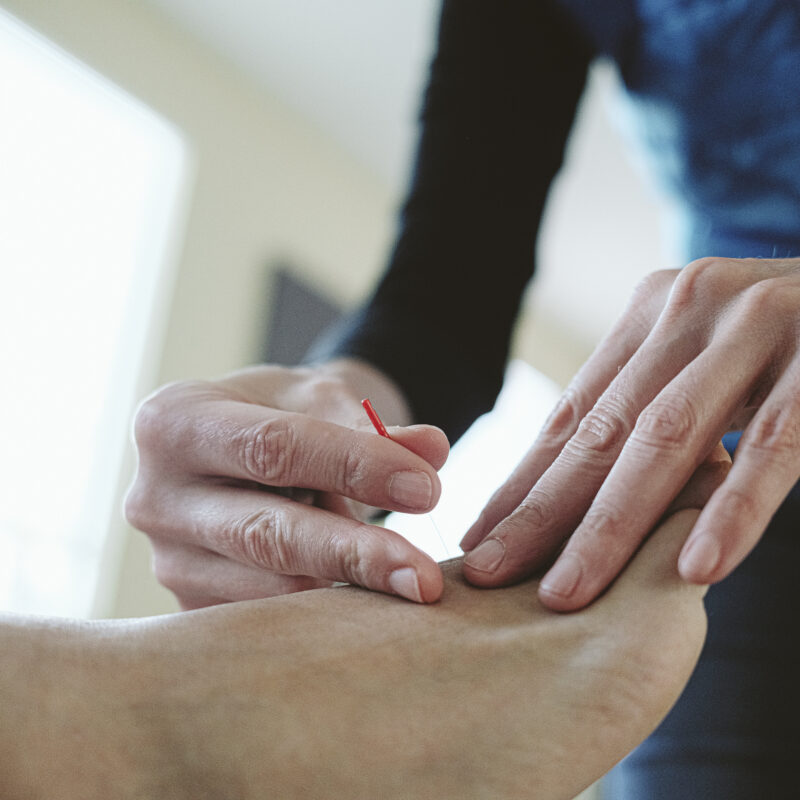For several years, the terms “green building” and “LEED” have been all but synonymous. Considered the gold standard (or, in some cases, platinum) for sustainable design, the LEED program has made inroads nationally, with lots of local buildings now LEED-certified. Many others are recognized under EarthCraft, EnergyStar, and other programs. Now, a group of home pros is bringing a new standard to Charlottesville—one they say is the best in the world in terms of energy efficiency. Though the Passive House concept is widespread in Europe, it’s just now breaking onto the scene in the U.S.
|
The initial design work was done by Chris Hays of Hays + Ewing, with later input from builder Alloy Workshop. |
“It’s by far the most stringent energy efficiency standard in the world,” says John Semmelhack. He’s the owner of Think Little, an energy-consulting firm, and he lives in a Woolen Mills house that hews closely to the Passive House standard (though it’s not actually certified). Across town, he’s consulting with builder Bill Jobes and architect Giovanna Galfione on another home that’s expected to be Virginia’s first certified Passive House. The Lankford Street project should be finished later this year.
What’s the secret to the Passive House concept? In a nutshell, a Passive House slashes energy use by 70 to 80 percent compared to a standard house. It does this by drastically cutting the amount of energy needed to regulate the building’s temperature in the first place—the so-called heating and cooling loads. Whereas Passive House is relatively unknown in America—only a dozen houses are certified here—the concept’s been alive in Europe since the early 1990s. In parts of Austria, 40 percent of new construction in 2010 will meet the Passive House standard.
Engineered to perform
When Semmelhack shows a visitor around his Chesapeake Street home, finished in 2008, his house pride is informed by a certain amount of wonkiness. A set of enormous windows in the southeast corner of the two-story living area offers a stellar view toward Monticello, but Semmelhack’s jazzed about how well they keep heat in. “The glass performs better than the frame,” he says; “the glass-to-frame ratio is very good.”
|
From top: Windows throughout the house are triple-glazed, with hardware that guarantees a consistent seal. A low-flow showerhead in the bathroom complements the house’s energy efficiency. |
It’s that kind of design consideration that makes Passive House work. The houses are extremely tight; they are super-insulated; their windows and doors are engineered to prevent airflow and keep indoor temperatures constant.
Though the term “Passive House” conjures 1970s-era passive solar designs, the two are not synonymous. Passive House makes use of solar principles without totally maxing out features like south-facing windows. “[In an earlier solar home], this whole south wall would be glazing,” says Semmelhack—which can cause overheating during the day and, without well-insulated windows, excessive cooling at night.
At Semmelhack’s house, those large southern windows not only allow for solar gain in winter, they can be opened on summer nights to let in cool air. The breeze is drawn upward through the house, toward more windows located just under the high side of a shed roof. This chimney effect is such an effective cooling mechanism that it makes the long white curtains on the southern windows billow inward, even on a still night—all the while using zero electricity.
Choosing simplicity
When Semmelhack and his wife Amy Wissekerke were planning their new house, he was less interested in expensive systems like geothermal heat than in simple, low- or no-maintenance design solutions. “The photovoltaic systems and solar thermal systems are great, but they should be the icing on the cake,” he says. “I came across the Passive House standard and it made perfect sense to me.” He adds that super-efficient houses aren’t necessarily more expensive to build than the merely very efficient.
|
COMPARING A PASSIVE HOUSE WITH A TYPICAL DWELLING 70 to 80 percent lower energy use overall 90 percent lower energy use for heating and cooling Maximum .6 air changes per hour, compared with 5-10 in a typical house |
Passive House specifies targets for heating and cooling loads, airtightness, and overall energy use. Houses are certified based on predictions about how well they’ll perform, plus a blower-door test to measure airtightness. Heating and cooling loads can be as little as 10 percent of what they’d be in conventional houses, leaving hot water as a building’s biggest energy demand.
With conditions like those, HVAC systems can be designed very simply, and thus are cheaper to install, maintain and replace. The houses’ extreme airtightness—up to 33 times as tight as standard new houses built in our area—means that they require energy recovery ventilators (ERVs) to bring in fresh air while blocking humidity, heat and cold from outside. In Semmelhack’s house, this device cost $1,600, uses as much energy as a light bulb, and needs only a few feet of ductwork.
As you’d expect, insulation is a prime concern. Passive House doesn’t specify materials, so a range of house types can achieve the standard: masonry, stick-built, or SIPs. The Semmelhacks chose the latter. For the Lankford Street house, Jobes has built wood frame walls with double studs enclosing a 2" space filled with insulation.
Windows and doors, normally weak points in a house’s thermal envelope, have to be top-notch in a Passive House. Semmelhack’s are triple-glazed windows from Canada and feature multi-point locking for a consistent seal. “You can stand next to the windows and not feel your body heat escaping,” he says.
|
A FIRST IN VIRGINIA
From top: Double stud walls, which will enclose a layer of insulation, are one key to the Lankford project’s low energy use. Big southeastern windows will capture sunlight and heat in winter, but will be shaded in summer. Project partners in what will be Virginia’s first certified Passive House, on second floor: producer Fred Greenewalt (left) and energy consultant John Semmelhack. On first floor: architect Giovanna Galfione (left) and builder Bill Jobes. |
Modern cool
Tucked against the edge of Riverview Cemetery, the Semmelhack house is a modern structure with a tall, narrow profile. Hardipanel rain screens and corrugated steel on the exterior break up the boxiness of the form. Chris Hays of Hays + Ewing did initial design work; Alloy Workshop built the house and refined Hays’ design.
“We’re a notch or so over in terms of heating and cooling load,” says Semmelhack, referring to the fact that his house is close-but-no-cigar on Passive House certification. He doesn’t seem too concerned; he’s still paying only $70 a month for power (which includes heating and cooling).
Meanwhile, the house itself is a bright space that makes the most of its 1,450 square feet. “[In the design process] we had multiple iterations of the house, but this kitchen was in all of them,” says Semmelhack. The long kitchen island is covered with butcher block on top and sides, and along the wall behind, a large bank of Ikea cabinets with translucent doors provides virtually all the storage. The space is lit by recessed LED lights that, with a 50,000-hour average lifespan, “should last ‘til I’m 80,” Semmelhack says.
Upstairs, daughter Sylvie’s bedroom has an eight-foot ceiling to fit attic storage above, while the bathroom and master bedroom take full advantage of the space under the shed roof with their dramatic sloping ceilings. The latter feels much more generous than it really is because it opens into the two-story space above the downstairs living area.
Though Passive House does not deal with criteria, such as green materials, that are included in the LEED program, it’s a natural fit to add such features to a Passive House. Here, low-flow showerheads and Appalachian Sustainable Development flooring complement the house’s energy efficiency. And the performance should keep improving: Trees planted along the western property line will provide more and more shade as time passes.
A happy marriage
On Lankford Street, Semmelhack, Galfione and Jobes have found a shared opportunity to put the Passive House standard fully into practice. “I had purchased this lot almost 10 years ago,” says Jobes. “God, it was sad-looking—old tires, beer bottles everywhere.” Galfione created a design for the site, but the project was tabled for nearly a decade, until Jobes toured Semmelhack’s new house and found himself inspired by the possibility of a measurable efficiency standard. “It all came together when I met John,” says Jobes, “and he analyzed the original drawings and recommended we upgrade to Passive House.”
Galfione had not originally designed for extreme energy efficiency. “It was a pretty standard construction house with 2×6” exterior walls and the usual insulation required by code,” she says. Still, she’d considered what she calls “pre-green features that I always like to work with.” These included minimizing the footprint and optimizing solar gain and cross-ventilation. For example, a porch is hardly a new technology. But, says Galfione, “The porch is a beautiful useful system for allowing sun [to enter south-facing windows] in winter and protecting in summer.”
In using “those good traditional elements of sensible design,” Galfione had unknowingly set up the Lankford house for a simple leap to world-class efficiency. To implement Passive House, she says, “We didn’t really have to change too much, other than the thickness of the envelope of the exterior walls. The house got a little fatter.” For her, nearly foot-thick walls are actually an aesthetic boon, because they create deep windowsills and shadows.
“We didn’t have to alter orientation or window placement,” says Semmelhack. Instead, the team focused on maximizing insulation and creating a continuous air barrier between inside and out. “Houses have so many components, and every time a component goes down, there’s an opportunity for leakage,” says Jobes. “You can’t do a project like this in a haphazard way. It requires a high level of craftsmanship and attention.”
Design that works
|
John Semmelhack’s house is not certified as a Passive House but is nonetheless highly efficient. The standard is widely applied in some European countries and is just now entering the U.S. scene. |
When finished, the three-story Lankford house will have some elements in common with Semmelhack’s home—large corner windows in the southeast, a natural chimney effect for passive cooling—and a few enticing features of its own. From outside, the house will have an unusual look that combines traditional and modern styles. “It’s kind of a design trick to respond both to the traditional context of the house, here on Ridge Street … [while] adding something that could bring in more modern features like flat roofs and a stucco finish,” says Galfione. A “tower” structure in one corner will echo a tower on a nearby historic Ridge Street house.
Local soapstone will cover the floor under the staircase, with windowsills and stair treads made from wood harvested on the property. Jobes has also installed storage tanks for a future rainwater harvesting system, as well as the infrastructure to support photovoltaic panels and a solar hot water system.
Perhaps the house’s strongest feature—aside from its $60 projected power bill—is the sweeping view from its elevated site. A second-floor porch and third-floor terrace make the most of it. “This is a blending of new technology and Giovanna’s and my design work,” says Jobes. “It’s a beautiful home that performs well.”











